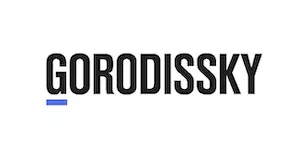I. REQUIREMENTS FOR DESIGN PROTECTION
A. Legal Framework
1. Basics of Design Right
In Russia, the intellectual property right that protects the visual appearance of industrial or handicraft articles is referred to as an 'industrial design patent', or more commonly an 'industrial design'. The Russian industrial design system is based on the following documents:
- Part IV of the Civil Code of the Russian Federation (the 'Code');
- Rules for preparing, filing and examination of industrial design application (the 'Rules');
- Requirements to the industrial design application documents (the 'Requirements');
- The Locarno Agreement Establishing International Classification for Industrial Designs;
- The Paris Convention for the Protection of Industrial Property;
- The Agreement on Trade Related Aspects of Intellectual Property Rights.
In Russia exclusive rights to industrial designs are recognised through registration in the State Register of Industrial Designs and certified by design patents issued by the Russian Patent and Trade Mark Office ('Rospatent').
According to Article 1352 of the Code, an industrial design is a solution defining the outer appearance of an industrial or a handicraft article. Paragraph 12 of the Requirements states that articles can be, for example, packages, labels, composite articles, sets of articles, type fonts or independent parts of article.
Patent protection as industrial designs will not be granted to:
- designs where all features are defined exclusively by technical function of the article;
- designs misleading a consumer of an article regarding the manufacturer of the article or a place of manufacture of the article, or a good for which the article is a container, a package or a label;
- designs including, reproducing or imitating official symbols or signs (flags, emblems, insignias, banknotes etc.); abbreviated or full names of international and intergovernmental organisations, their flags, emblems, and other symbols and signs; official control, guarantee marks or hall-marks, seals, awards and other insignias;
- designs which are contrary to public interests, principles of humanity and morality.
According to Article 1391 of the Code an industrial design application undergoes a formal examination and a substantive examination. In case of a positive result of examination, an industrial design patent is granted. The industrial design patent is valid for five years with possibility of four extensions for five years each.
2. Overview of Statutory Requirements
Article 1352 of the Code stipulates two criteria of patentability of industrial designs: 'novelty' and 'originality'.
A design is 'novel' if its overall appearance was not generally known, anywhere in the world, before the priority date of the application for the industrial design. In other words, design protection is given only to those industrial designs that possess absolute worldwide novelty.
The Russian design law provides for a novelty 'grace period' for design applications. The novelty grace period exempts disclosures made by its author, or by any person who lawfully received the disclosures from the author, if the application for the industrial design was filed within twelve months from the date when the information was disclosed.
An industrial design is 'original' if the essential features thereof are determined by the creative nature of the specificities of the article. In particular, a design is original if there is no prior art design for an article of similar function that produces the same impression on the informed consumer. During novelty and originality examination, the examiner takes into consideration all industrial design applications, invention applications, utility model applications and trademark applications of other applicants filed in the Russian Federation before the priority date of the application for the industrial design.
3. Non-Functionality Requirement
Article 1352 of the Code states that a design is not eligible for design protection when all of its constituent visual features are defined exclusively by the technical function of the article.
4. Means for Claiming Design Rights
In order to obtain an industrial design patent it is necessary to file an industrial design application with Rospatent. As stipulated in Article 1377 of the Code, an industrial design application should comprise:
- a request for the grant of an industrial design patent with the indication of the applicant and of the authors and addresses thereof;
- a set of representations of the industrial design providing a complete perception of essential features of the industrial design, which determine aesthetic specificities of the outer appearance of the article;
- a written description of the industrial design;
- a Power of Attorney;
- a certified priority document, if Paris Convention priority is claimed.
The filing date for the industrial design application is accorded when the request and reproductions are filed.
The written description of the industrial design does not define the scope of protection. It is used to conduct a rational dialogue between the applicant and the examiner when establishing terminology, which will be used not only during the examination of the application, but also during hearings in the Chamber for Patent Disputes and in the courts.
The set of representations of the industrial design may consist of photographs, CAD or line drawings with or without surface shading. It should be pointed out that number of views in industrial design application must not exceed seven.
To view the full article please click here.
The content of this article is intended to provide a general guide to the subject matter. Specialist advice should be sought about your specific circumstances.

